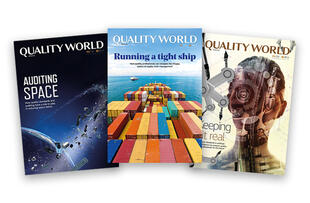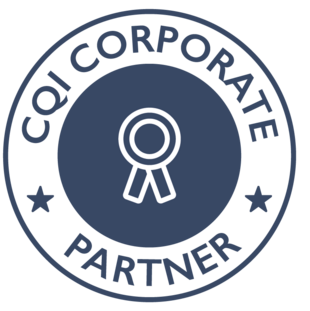
Helping quality professionals get further, faster
Progress indicator

The CQI’s third Corporate Connect event looks at the upcoming changes to the competency assessment guide and score tool. Ian McCabe, CQP FCQI, talks about what the update means.
Ian McCabe, CQP FCQI, of NXTGen Quality Solutions worked closely with the CQI to update the Competency Assessment Guide and Score Tool, soon to be rolled out to Corporate Partners. He discusses the impetus behind the changes and the benefits he hopes it will bring to employers.
How have the CQI’s Competency Assessment Guide and Score Tool helped the profession?
When I joined the quality profession 20 years or so ago, it was cloaked in this mystique, you didn’t really know quite what it was, it wasn’t defined. So it was by chance more than design that you acquired the right skills and knowledge and found the role which was right for you. When you wanted training and development, you tended to choose (or be told to attend) the audit courses or ISO 9001 courses, because those were the things associated with the profession.
The Competency Framework, combined with this tool, makes it easier to identify the types of roles that are right for you and what learning and development you need to perform well in the role.
What was the impetus for this latest revision of CQI’s competency assessment guide and score tool?
Without doubt, access to the assessment guide and score tool has been an important factor in the decision of organisations becoming CQI Corporate Partners. However the feedback has been that while they see the potential benefits of the tool, they weren’t able to easily realise value from it. It wasn’t that the content was wrong, they just weren’t able to deploy it easily.
Some organisations hadn’t used it or hadn’t gone beyond the pilot stage, so neither they, nor the quality professionals they employ were realising its value or the full value of the Corporate Partner Programme.
There was also a feeling that, although the tool may be used by organisations to support the full talent manager spectrum, from workforce planning to succession planning, in reality it was primarily being used as a self-assessment tool for individuals, for their own career planning or as a reference guide for organisations developing their own competency framework.
What were the barriers to using it more widely?
The amount of time it took to implement the tool was a source of frustration for many. There were organisations that were using it well, but it had taken a lot of time to coach their quality professionals in how to interpret requirements and complete the assessment process. For this reason it wasn’t a tool that could seamlessly fit into other change programmes that were going on.
The Corporate Partners we spoke to felt that for these issues to be overcome, the overall design of the tool needed a rethink. They wanted us to make it easier for those in operational roles to see its relevance, and for the requirements to be less repetitive and more concise. They wanted an individual to be able to assess their level of competence without the need for extensive coaching in how to ‘score’ their competence.
What have you set out to achieve with the changes in the new version?
We wanted to respond to this feedback. We also wanted to deliver something that would help the profession be more accessible to non-quality professionals or those starting out. It’s also about making the requirements of a modern quality professional easier to identify with for those already in the profession — allowing them to see where their existing competencies fit within the overall framework.
The tool is not a specification for a perfect quality professional, it’s simply a framework to help assess where you are, where you want to be and how you get there — whether that’s something which is determined by your organisation within a job description or by the individuals themselves through their own professional ambitions.
How would you like to see organisations using the tool in the future?
I’d like to think that those who are new to the profession, or who are managing quality professionals, can use the tool to better understand the variety of skills and knowledge contained within the profession and the ways in which they benefit an organisation. I’d also like to think that individuals will find it easier to plot a course for a rewarding career in quality by using the tool to help determine the right learning and development objectives, identify the types of roles that they will enjoy and which suit their own interests, strengths and personality. If we achieve this then we’ll have a healthy and balanced stock of competencies within the profession and that can only be a good thing for the organisations we serve.
Corporate partnership
Become a corporate partner and ensure quality is a top priority in your organisation
Quality World

Get the latest news, interviews and features on quality in our industry leading magazine.



